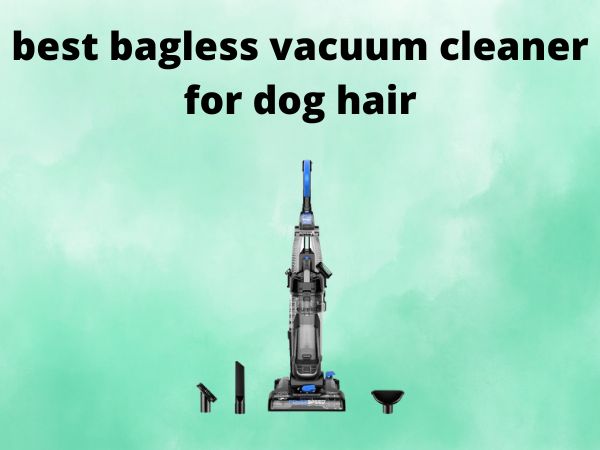How to Clean a Bissell Vacuum Filter for Peak Performance
We all know that keeping our homes clean requires a reliable vacuum cleaner. But what happens when the very appliance meant to clean starts to lose its efficiency? Ever wonder why your Bissell vacuum isn’t performing quite like it used to? Chances are, the culprit is a clogged filter. Let’s dive deep into how to clean the Bissell vacuum filter, ensuring your cleaning buddy works at its best!
Table of Contents
Why Clean Your Bissell Vacuum Filter?
Before we embark on this cleaning journey, you might ask: why is it even necessary? Think of the vacuum filter as the lungs of your vacuum cleaner. Just like how clean lungs ensure smooth breathing, a clean filter ensures optimal suction and efficiency. With time, dust and debris accumulate, blocking airflow and straining the motor. This isn’t just about cleanliness; it’s also about prolonging the life of your vacuum.
Signs Your Filter Needs Cleaning
Still unsure if it’s time to give your filter some TLC? Here are tell-tale signs:
- Reduced suction power
- Unusual or loud noises from the motor
- Visible dust clouds while vacuuming
- The vacuum feels hotter than usual
The Consequences of Ignoring Your Filter
Ignoring a clogged filter is akin to driving a car with a blocked exhaust. It can lead to:
- Decreased cleaning efficiency
- Increased energy consumption
- Potential damage to the vacuum motor
Understanding Your Bissell Vacuum Filter
Before diving into the cleaning process, let’s familiarize ourselves with the components:
Types of Filters in Bissell Vacuums
Bissell vacuums come equipped with different filters, each playing a unique role:
- Pre-motor Filters: These capture larger particles, preventing them from reaching the motor.
- Post-motor Filters: These are more refined and capture smaller particles before air is released back into the room.
- HEPA Filters: Designed for high-efficiency particle absorption, ideal for allergy sufferers.
Where to Find the Filter
The location can vary depending on the model. Generally, filters are located:
- Near the vacuum bag or dustbin
- Behind an easily accessible panel or flap
Step-by-Step Cleaning Guide
Now, let’s roll up our sleeves and get started!
Tools You’ll Need
Before you begin, gather these simple tools and materials:
- Microfiber cloth
- Soft brush
- A bowl of lukewarm water
- Mild dish soap
Step 1: Unplug and Disassemble
Safety first! Ensure the vacuum is unplugged before you start. Locate the filter compartment and remove the filter carefully. Check your Bissell manual for model-specific instructions.
Step 2: Shake Off Loose Dirt
Take the filter outside or over a trash can and gently tap it to dislodge any loose dirt and debris.
Step 3: Wash the Filter
Fill a bowl with lukewarm water and add a few drops of mild dish soap. Submerge the filter and gently scrub with the soft brush. Avoid using harsh chemicals, as they can damage the filter’s material.
Step 4: Rinse and Dry
Rinse the filter under running water until all soap residues are eliminated. Shake off excess water and let it air dry completely. Remember, replacing a damp filter can lead to mold growth!
Step 5: Reassemble
Once fully dry, place the filter back into its compartment, ensuring it fits snugly.
Additional Maintenance Tips
Beyond regular cleaning, here are some tips to keep your Bissell vacuum running like new:
Check It Regularly
Develop a habit of checking the filter every few vacuuming sessions. Spotting dust build-up early can save you from major headaches later.
Replace When Necessary
Even with regular cleaning, filters have a finite lifespan. Depending on usage, consider replacing them every 3-6 months.
Don’t Forget Other Parts
Cleaning the entire vacuum is crucial. Empty the dustbin, check for blockages in the hose, and ensure the brush rolls are free of hair and debris.
Conclusion
In the grand symphony of home cleanliness, your Bissell vacuum plays an unsung lead role. By keeping its filter clean, you ensure it continues hitting the high notes effortlessly. Remember, a clean filter isn’t just about better performance—it’s about extending the life of your trusty companion. The next time your vacuum doesn’t seem like it’s working its magic, you’ll know exactly where to look. Happy cleaning!
FAQs
How often should I clean my Bissell vacuum filter?
It’s best to clean the filter every 1-3 months, depending on your frequency of use and the type of debris you’re tackling.
Can I use a hairdryer to speed up the drying process?
Using a hairdryer can damage the filter and isn’t recommended. Stick to air drying for optimal results.
What happens if I use my vacuum with a wet filter?
A wet filter can lead to mold growth and may damage the vacuum’s motor. Always ensure the filter is completely dry before reassembling.
Is it necessary to replace my filter, or can I continually clean it?
While regular cleaning can prolong a filter’s life, it should still be replaced every 3-6 months to maintain peak performance.
Are all Bissell filters washable?
Not all filters are created equal. Check your vacuum’s manual to determine if your filter is washable or requires replacement when dirty.






